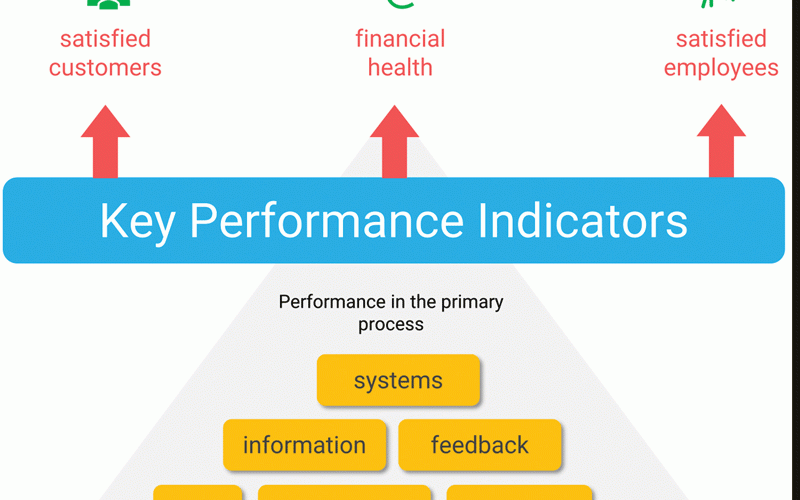
Over the last decade, significant changes in the business environment have had a profound and lasting influence on how supply chains operate. The current business environment is characterised by an endless minefield of obstacles in a world where supply disruptions seem to multiply and morph on a daily basis.
Many organisations are slowly realising the need to rely heavily on supplier performance evaluation as a means to provide valuable insights into the performance levels of suppliers.
Key Performance Indicators (KPIs) are key in the provision of an in-depth analysis of where the procurement function is impacting on the business and how the impact changes overtime. In a world where supply chain disruption seems to pop up every now and then, key performance indicators earmarked to measure supplier performance will serve as red flags that supply chain challenges are beginning to manifest.
It is often said if you cannot measure it, you cannot improve it. In other words, what gets measured gets done. Procurement KPIs are measurable values that will assist supply chain professionals to assess the efficiency, effectiveness and impact of procurement activities. They act as a veritable compass guiding the organisation’s direction towards value driven targets.
They are generally regarded as navigational tools to guide strategic decisions and process improvements in supply chain. KPIs will be relied upon to take a pulse check on organisational procurement process efficiencies with a view to optimise supply chain performance with unparalleled precision.
This will give top management and other key stakeholders a temperature “feel” of how supply chain activities are levelling up in line with expectations. After all, the true measure of productivity lies not in how much we do but how well we do it.
The strict monitoring of KPIs will give supply chain leaders the opportunity to identify areas of improvements and implement iterative changes in the procurement process flows.
This will largely focus on creating value, driving efficiency and building resilient supply chains. Procurement KPIs are also useful in the provision of guard rails to supply chain professionals on the allocation of organisational resources, helping management to identify areas that yield the highest returns.
The right KPIs can be the difference between success and stagnation since the tracking of KPIs allows supply chain professionals to pinpoint inefficiencies within procurement processes. With information from such performance evaluations, procurement professionals can implement process improvements, automation, and best practices to streamline operations with a view to reduce costs.
The monitoring of KPIs related to supplier performance and risks will assist supply chain professionals to pinpoint risk factors, allowing them to take proactive measures such as identifying alternative suppliers or establishing contingency plans to mitigate the risks.
Supply chain challenges and complexities will continue to multiply and divide in the supply chain landscape. Adopting KPIs to evaluate the day-to-day procurement efficiencies over reasonable timescales is now table stakes. Whenever key performance indicators are deployed correctly, they will expose inefficiencies and track progress towards organisational goals and milestones.
The process will look at things with ruthless honesty. The real magic of procurement KPIs lies in their ability to pair and be compared, offering insights into the health of the supply chain ecosystem. These indicators are crucial benchmarks to assess performance, monitor trends and make informed decisions. By measuring procurement KPIs, supply chains can align their activities with strategic objectives and comprehensively understand their overall performance.
The performance evaluation will enable supply chains to adjust their procurement strategies promptly, ensuring they stay competitive and responsive to changing market dynamics.
Whenever red flags are identified, supply chain professionals will be in a position to provide progressive feedback to suppliers based on objective data which will enable them to make necessary improvements targeting the overall success and competitiveness of the entire supply chain. There is no need to waste time on things that don’t move the needle.
Supply chain professionals are required to ensure that the KPIs being tracked are aligned to the interests of key stakeholders, demonstrating procurement’s value across all business verticals. However, it is a common challenge that there are so many KPIs that can be used to measure supplier performance. Picking the wrong ones means measuring things that are not relevant to your supply chain.
Many organisations tend to stray off course because they end up measuring irrelevant variables. At the same time, it is neither possible nor efficient to track everything. Not all measures are important to track after all.
Too many KPIs can easily create unnecessary work and confusion. It is therefore advisable to narrow down your list to only those KPIs that will help drive your strategy forward.
The major categories of key performance indicators will largely depend on your line of business.
Procurement KPIs come in various types and forms. Cost saving KPIs focus on procurement return on investment, cost reduction, cost avoidance and spend under management. Quality focused KPIs are laser focused on procurement compliance rates, supplier defect rates and purchase order accuracy.
Delivery focused KPIs are mainly focused on monitoring the purchase order cycle time, emergency purchase ratio, supplier lead time and vendor availability. Inventory focused KPIs are overly concerned about inventory aging and inventory turnover ratio.
Having identified KPIs that are mainly used for evaluating procurement activities, it would appear there is always a hyper focus on cost savings as the most important indicator of success. Although cost savings are at the heart of what procurement is all about, there is often a tendency to over prioritise price over value. Unfortunately, this approach fails to capture the nuance and scope of activities expected of procurement KPIs. Procurement’s role goes far beyond just saving money.
Cost savings is a KPI that measures the amount of money saved through procurement activities such as price negotiations with vendors, use of strategic sourcing and cost reduction initiatives.
Cost savings objectives in the supply chain can be achieved through aggregating supply chain requirements, negotiating better prices through volume discounts, reducing waste and process efficiencies gained through automation. Under the cost saving category of KPIs, there is also cost avoidance.
Cost avoidance refers to the prevention of potential supply chain costs that may arise if not for proactive procurement decisions. Metrics in this category will seek to measure the capacity of procurement to identify and address risks and inefficiencies before they escalate into actual expenses.
Such KPIs will assess the capacity of procurement to take preventative actions with a view to avoid future costs before they materialise. The assessments will also focus on procurement’s capacity to use strategic foresight tactics to lock in long-terms contracts with suppliers at current prices to avoid price changes, supplier diversification to avoid over reliance on sole suppliers and the capacity to negotiate favourable terms that protects your supply chain from future price increases through fixed term contracts.
Procurement key performance indicators simplified analysis (I)
The procurement cost avoidance KPI will also seek to evaluate procurement’s capacity to prevent supply chain expenses caused by inflation, economic changes or speculative rising prices. It may also involve entering into long-term contracts to shield the business from future price fluctuations or negotiating value-added services such as extended warranties and complimentary back-up maintenance support. This will enable your supply chain to maximise cost savings, minimise risks and drive strategic sourcing decisions.
Procurement Return on Investments KPIs will focus on evaluating the capacity of supply chain professionals to use automated systems that are meant to streamline procurement processes while reducing manual errors. This variable will therefore seek to measure the return on the money invested in procurement activities. This procurement ratio will seek to compare the financial gains or benefits achieved from procurement to the costs involved in those procurement activities. Under this category of KPIs, spend under management is also a critical metric that measures the percentage or proportion of the procurement budget actively managed or controlled by procurement. The more spend under management, the better procurement teams can optimise spending and implement procurement cost avoidance strategies. As the spend under management increases, so does the ability for procurement teams to optimise their budget control efforts. The use of high spend under management KPIs significantly correlates with increased cost savings and better spend visibility.
The other category of procurement key performance indicators relates to those that are laser-focused on quality-related variables. These will cover procurement compliance rates, supplier defect rates and purchase order accuracy. The compliance metric measures the percentage of contracts that are compliant with legal, ethical and other requirements. This metric can be used to identify areas where contract compliance is lacking and the extent to which suppliers respect contractual obligations to include delivery schedules, quality standards and stipulated pricing structures. A contract that is signed but not followed is not much more valuable than no contract at all. This category of KPIs will serve as an early warning system in situations where there are prevalent cases of non-compliance with contract terms, or where there is poor workmanship. Supply chain professionals will be in a position to see red flags in good time before they can develop into major bottlenecks. This will obviously assist in countering potential supply chain financial leakages, potential reputational damage and or potential legal challenges from aggrieved third parties. A high compliance rate under this category will demonstrate that the preferred supply chain partners are dependable, reliable, and consistent in their business dealings. This will result in fewer disruptions, lower production costs and reduced operational risks.
Major procurement challenges can emanate from quality-related variables in supply chain. The KPIs meant to monitor supplier compliance rates are therefore important assessment variables. Strategies to ensure there is high compliance rates revolve around ensuring that vendors are fully conversant of the terms and conditions of the supply contract to include delivery schedules, pricing structures, payment terms, quality standards and penalties for non-compliance. KPIs relating to supplier defect rates strategies will seek to assess procurement capabilities in ensuring that suppliers understand quality standards and expectations. Sharing defect rate data with vendors and sharing notes on potential solutions to improve product quality is an important step towards procurement quality excellence. It is also very important to assess where procurement has the capacity to carry out regular inspection of goods and ensuring they meet the agreed standards.
In conclusion, procurement – in between chaos and uncertainty – has continued to play a crucial role in ensuring that there is a smooth flow of goods and services. Periodic evaluation of supplier performance metrics will ensure that customer expectations (realistic or unrealistic) are met and exceeded. Supply chain professionals have their responsibilities cut out, they need to monitor, measure and manage the performance of their suppliers. If your organisation does not rely on KPIs to measure supplier performance, you are not alone. But here is the good news, it is not too late to start. Time is your only infinite resource. Someone is sitting in the shade today because someone planted a tree 15 years ago. It is time to plant yours now. It only requires directing your utmost attention – your most precious resource, with intention. As long you are committed to the process, the results will take care of themselves.
- Nyika is a Supply Chain practitioner based in Harare, Zimbabwe. — [email protected].










